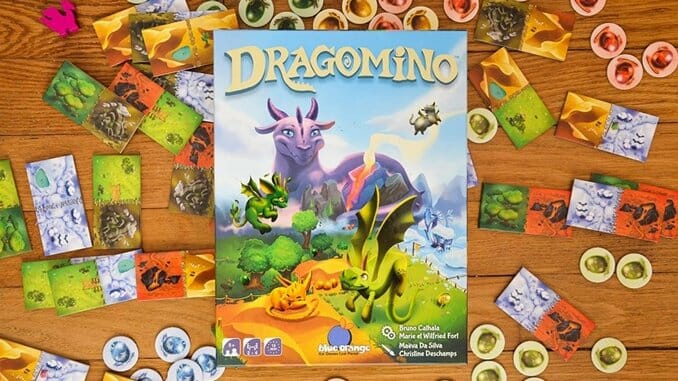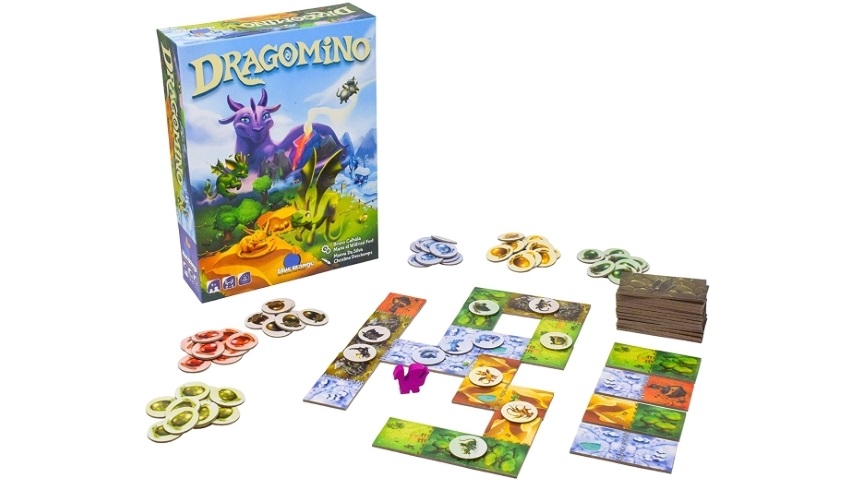Dragomino Turns a Beloved Board Game into a Child-Friendly Treat
Images courtesy of Blue Orange Games Games Reviews board games
Versions of popular board games for younger kids can be a mixed bag, to be kind; while there are some successful such simplifications, like Ticket to Ride: First Journey, there are others than just strip all the good stuff out of the parent game and leave you with something that’s marginally better than Candyland. (Candyland is the perfect game to play with your kids if you want to teach them that life is pointless and random.)
That’s why Dragomino, a kids’ version of the Spiel des Jahres-winning game Kingdomino, is such a wonderful surprise. It reimagines the original game in an entirely new way, keeping the domino shapes and the terrain-matching elements of Kingdomino, removing what would likely be the hardest part for a child to understand, and adding a set of rewards with a little bit of luck to help level the playing field between older and younger players. It’s a model for other designers who want to take their more sophisticated games downstream to let gamers play with their youngest children, siblings, or relatives.
In Dragomino, players will select tiles from sets of four placed on the table between them, and then will add them wherever they’d like to their own personal ‘kingdoms,’ which all begin with the same tile, showing one square of snow terrain and one square of desert. If you match a terrain type, you get to take a dinosaur egg token of the same color. You can often match two on the same turn, and would thus take two eggs; matching more is possible but unlikely, and probably not very sporting to the youngest players at the table.

Each dinosaur egg has either a baby dinosaur on the other side or a broken egg. If you find a dinosaur egg, you will get one point for it at the end of the game. If you find a broken egg, you get to take the dinosaur token that marks the first player. Either way, you place the revealed egg token on the boundary between the matching terrains.
The twist is that not all six terrain types’ eggs are created equal—the percentage of egg tokens with baby dinosaurs on the other side varies by type. Volcano (red) dragon eggs are the most likely to hold a baby dragon, while desert (yellow) tiles are the least. This is the one bit of strategy in the game—you want to take tiles with the terrain types that are most likely to yield eggs, and to set up your tiles in a way that increases the chance of making such matches (or even two in one turn).
Games take about 15-20 minutes, playing two to four players. It’s absolutely suitable for players as young as four, as the main skill required is just color matching—there’s no text involved—and you can coach the youngest players by pointing out that certain terrain colors are more likely to yield them baby dragons. There’s no restriction on how or where to place your tiles when you take them, so there’s no need to think ahead to future turns as in Kingdomino. It’s a fun, bright, easy-to-learn game that accomplishes the very rare feat of taking a great game for adults and bringing it to the youngest audience.
Keith Law is the author of The Inside Game and Smart Baseball and a senior baseball writer for The Athletic. You can find his personal blog the dish, covering games, literature, and more, at meadowparty.com/blog.